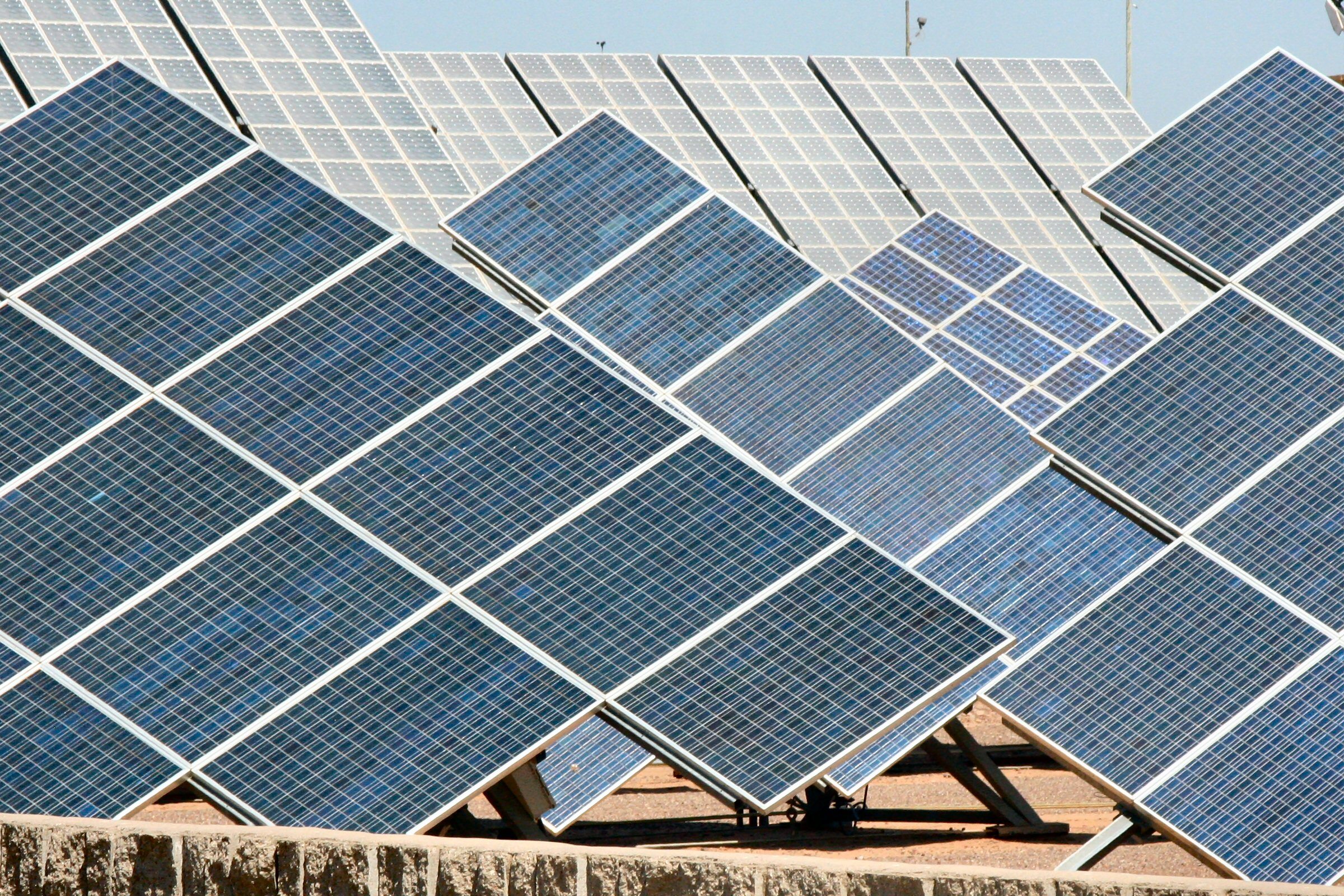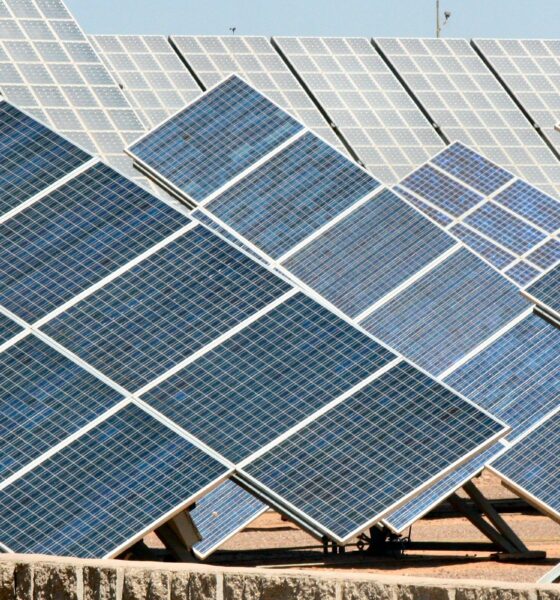

Economy
Building a sustainable global economy
Ceres, the non-profit organisation Mindy Lubber leads, marks its 25th anniversary this year. Its mission – to build a sustainable global economy – remains a work in progress, but it has accomplished much since its founding.
Ceres’s launch was inspired by the horrific Exxon Valdez oil spill. At that time, the very idea of corporations having an ethic to measure and improve social and environmental performance beyond legal requirements was considered implausible. Today, the landscape is remarkably different, with corporate sustainability reporting not only the norm, but increasingly integrated into companies’ strategic decision-making.
For the past quarter of a century, Ceres has mobilised hundreds of companies and investors managing trillions of dollars towards building a global economy that does not sacrifice the environment in the name of profit. This has required fundamental changes in how these key capital market players analyse and respond to a range of sustainability threats, from climate change and exploitation of scarce water resources, to vulnerable supply chains, to the health and human rights of workers and communities.
Ceres worked to catalyse this change by launching the Global Reporting Initiative, which has spurred companies around the world to report on and address sustainability challenges from greenhouse gas emissions to the resiliency of supply chains. Ceres also introduced the term “climate risk” into the economic lexicon, galvanising mainstream investor attention to climate change, and prompting both the US Securities and Exchange Commission and the National Association of Insurance Commissioners to issue mandatory climate risk reporting requirements for companies.
Now we’re doing the same for “water risk”, as the historic drought afflicting California has awakened many businesses and investors to the risks they face from water scarcity. Twenty-five years ago, few companies or investors even conceived of these risks. Now, the world’s largest companies and investors are integrating climate and water risk management across their operations and overall strategies.
However, this shift towards sustainability isn’t happening fast enough or broadly enough. Climate change, perhaps our biggest sustainability challenge, is accelerating more aggressively than anyone predicted a decade ago. Time for meaningful action is running out, and progress is still hampered by continued short-term thinking by many policymakers, corporations, investors and other economic actors.
Take the oil and gas industry, for example. Oil and gas companies continue to invest massively – more than a half-trillion dollars a year – to find and extract fossil fuels from more challenging and unconventional places, including oil sands in Canada (where the oil is bound up in sand), deep in layers of shale formations (where hydraulic fracturing and horizontal drilling technologies are being used to extract the oil and gas) and in the polar seas, the most hostile of all environments.
Yet, we can’t possibly use or burn all of this oil without running headlong off the climate cliff – the point where climate change becomes catastrophic to both the environment and the economy.
We need to curb our reliance on fossil fuels, not build our energy future around them. It is now well-accepted climate science that the upper limit on climate change, before widespread global disruption takes place, is 2C above pre-industrial levels. If existing oil reserves are burned, we will blow right through that ceiling. This is the trajectory we’re on right now.
Some welcome this new era of ‘cheap’ unconventional oil and gas, but it isn’t really cheap at all. It is ‘cheap’ only because the economic costs of climate change, including the costs of rising sea levels, climate-driven severe weather events and the pubic health consequences of a warmer Earth are never part of the calculation.
The hundreds of billions of economic damages caused by stronger, more damaging storm events, including Superstorm Sandy, are the most obvious examples. The disruptive impacts of changing weather patterns on agriculture and key commodity markets aren’t figured into the cost of carbon-based fuels either.
In short, as climate change causes larger economic ripples across the globe, those costs are never factored into the price of a barrel of oil and won’t be borne by those reaping hefty profits from their production. That’s why when critics argue that clean renewable energy – solar and wind, for example – are less cost-competitive with carbon, it’s only because in our collective myopia we never calculate the true societal costs of carbon pollution that remains largely unregulated.
This same shortsightedness is also evident when it comes to water risks. Populations continue to swell in the country’s most arid, water-stressed regions, including much of the west and south-west. Water infrastructure is aging and inefficient and investment is lagging, in large part due to water being undervalued and underpriced by local water utilities.
Many regions where hydraulic fracturing is especially concentrated are also areas reeling from prolonged droughts, depleted aquifers and growing water competition from farmers, homeowners, industry and other users. (See Ceres’s new report on this topic).
The simple truth is that short-termism is still all too prevalent in corporate and investor decision-making. It underpins all of our sustainability threats. We remain mired in quarterly capitalism — a system that drives far too many CEOs, directors, investors and analysts to focus on short-term performance at the expense of long-term value creation and global sustainability.
A 2012 research paper by Generation Investment Management, Sustainable Capitalism, offers sobering news in this regard. When a group of top asset managers attending a conference sponsored by Morgan Stanley were asked about their investment time horizon, 55% said a quarter or less; only 20% said more than a year.
Another survey revealed that 78% of managers would reject a net-present-value-positive project if it would lower quarterly earnings below consensus expectations, and 80% would focus on this short-term metric at the expense of building long-term shareholder value.
This should alarm every investor looking for long-term value creation, because climate regulatory risks alone could cost investment funds $8 trillion (£4.8 trillion) by 2030, according to the international consultancy Mercer.
But it’s not hard to see why this short-termism is so pervasive. Average CEO tenure has dropped from eight years to four over the past generation, giving CEOs incentives to manage for the near term and to avoid decisions that might make long-term sense even though they don’t immediately improve the bottom line.
For example, managing the long-term risks of climate change might require near-term investments and commitments to new technologies, product innovation and new risk assessment tools that a CEO might just as soon leave to his or her successor. But most compensation packages are linked not to long-term value creation and skillful management of long-term risks, but to quarterly or annual bottom-line performance.
Investors, too, demand quarterly performance and often fail to examine how companies are preparing to manage climate and other environmental risks, or even to exploit promising opportunities in clean energy innovation that are our best defence against catastrophic climate change impacts.
So, what is Ceres doing to shift this dangerous paradigm?
– First, we have created the basic tools companies and investors need to begin operating in ways that contribute to a sustainable economy, tools designed to catalyse long-term thinking about how sustainability risks and opportunities will impact business and investing in the 21st century. The Ceres Roadmap for Sustainability is a framework and practical guide that hundreds of companies are using to become more sustainable. The 21st Century Investor: The Ceres Blueprint for Sustainable Investing is a how-to guide to help investors, particularly large institutional investors, integrate sustainability risks and opportunities across their decision-making.
– Second, through our investor-led Carbon Asset Risk initiative, we are drawing attention to the risks fossil fuel companies are running in developing new reserves that might be unusable as the low-carbon global economy takes hold. Due to a variety of trends, including escalating carbon-reducing regulations, renewable energy sourcing and other low-carbon technologies, many coal and oil reserves being developed today may ultimately be worthless as global demand for fossil fuels begins declining. Fossil fuel reserves that have both expensive production costs and a high carbon footprint are considered most at risk of being unusable, thus becoming stranded assets, in the future economy. Ceres and Carbon Tracker are co-ordinating the effort by nearly 100 institutional investors who are pressing the world’s 45 largest fossil fuel companies on these concerns.
– Third, Ceres is challenging powerful capital market players to meet global clean energy investment requirements by 2030. The International Energy Agency states that to keep global warming below the critical 2C threshold, global clean energy investment by governments, companies and investors must be increased by an average of $1 trillion (£600 billion) a year for next 36 years. Ceres calls this the Clean Trillion energy challenge, and we have called for a doubling of clean energy investing to $500 billion (£301 billion) a year by 2020 and to $1 trillion (£600 billion) a year by 2030. Our report, Investing in the Clean Trillion: Closing the Clean Energy Investment Gap contains 10 specific action steps towards this goal in three broad areas: mobilising investor action to scale up clean energy investment, promotion of green banking and debt capital market, and reforming climate, energy and financial policies.
Finally, company by company, investor by investor, we are making the business case for sustainability. Sustainability isn’t a luxury, it’s an essential strategy for economic survival. It is, therefore, incumbent on companies, large institutional investors and other key market players to stop sitting on the sidelines of the climate debate and get in the ring.
They can have a powerful influence in moving policies that will help secure a stronger, sustainable economy based on the recognition that a strong economy depends upon integrating the risks of climate change and other sustainability challenges and moving capital to the opportunity side of the sustainability equation.
This is starting to happen. Our Investor Network on Climate Risk now comprises more than 100 institutional investors with more than $12 trillion (£7.2 trillion) under management, and similar networks have emerged in the Asia-Pacific, Europe and Australia/New Zealand.
Major corporations from every sector of the economy, from Ford Motor Co to Nike, are making sustainability a core business value integrated into every aspect of business operations. More than 750 leading companies, including General Motors, Apple, Unilever and KB Home, have signed the Ceres Climate Declaration calling for concerted action to combat climate change and for seizing the huge business opportunities in clean technology, renewable energy efficiency.
The challenge is great, our time is short, and the stakes couldn’t be higher.
 Mindy Lubber is president of Ceres, a non-profit organisation mobilizing business and investor leadership on climate change and other sustainability challenges. Learn more at www.ceres.org and follow on Twitter @CeresNews. This article was originally published by GreenMoney Journal at GreenMoney.com.
Mindy Lubber is president of Ceres, a non-profit organisation mobilizing business and investor leadership on climate change and other sustainability challenges. Learn more at www.ceres.org and follow on Twitter @CeresNews. This article was originally published by GreenMoney Journal at GreenMoney.com.
Further reading:
Investors worth $3tn put pressure on fossil fuels industry to rethink future
Private investment in sustainable economy set to reach $10tn by 2020
Climate change a long-term threat to investment, UN tells investors
Major philanthropic foundations add backing to fossil fuel divestment drive


 Environment10 months ago
Environment10 months agoAre Polymer Banknotes: an Eco-Friendly Trend or a Groundswell?

 Environment11 months ago
Environment11 months agoEco-Friendly Home Improvements: Top 7 Upgrades for 2025

 Features9 months ago
Features9 months agoEco-Friendly Cryptocurrencies: Sustainable Investment Choices

 Features10 months ago
Features10 months agoEco-Friendly Crypto Traders Must Find the Right Exchange



























